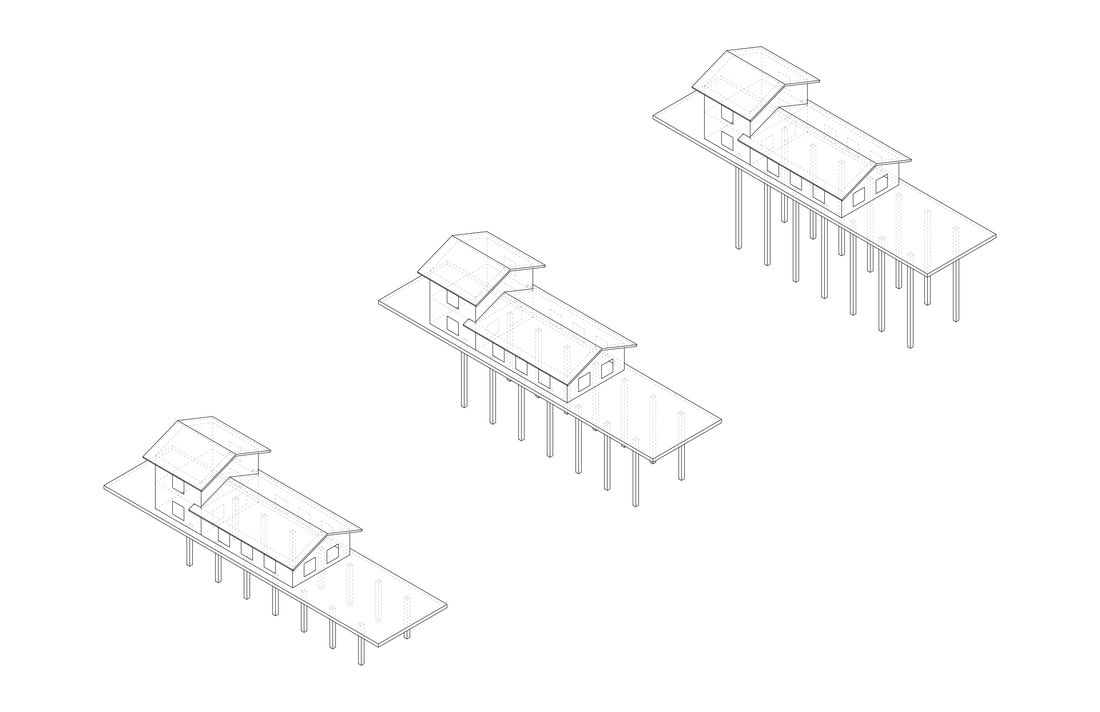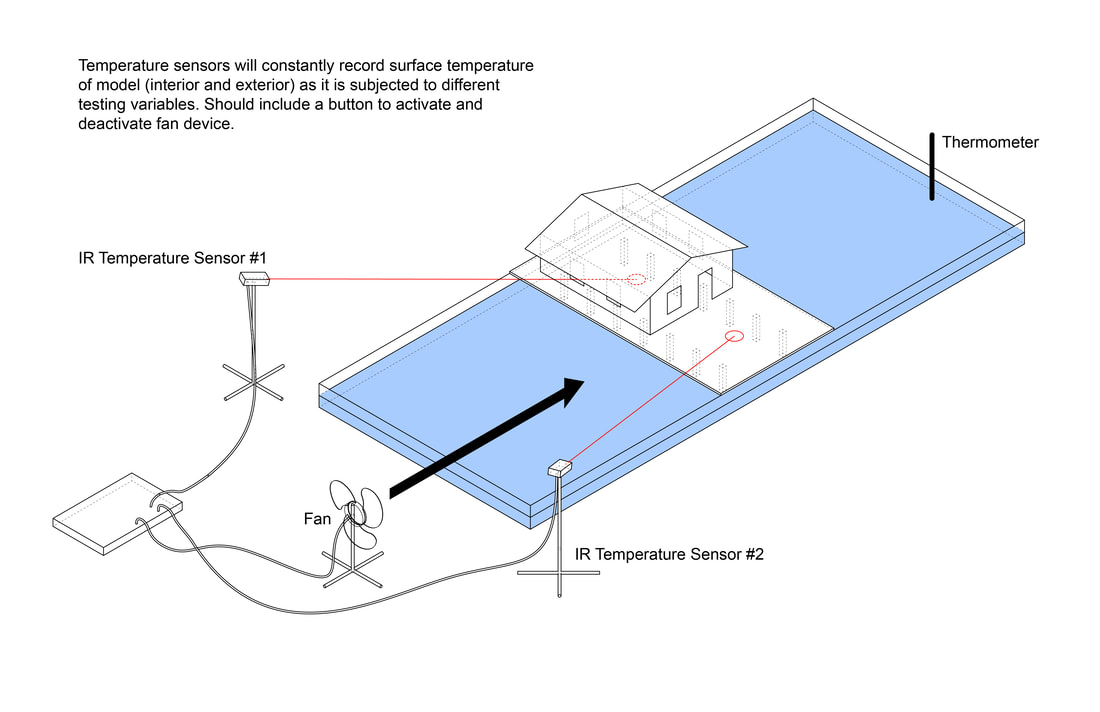Design Proposal
Background
Ever since humans began expanding into new territories and establishing permanent settlements, they did so around bodies of water. These locations provided an opportunity for travel and resource production that new civilizations could hold at their core. As a result of their inherent thermal / cooling properties, masses of water also function as generators of microclimates in their given contexts. Factors like increased air flow, high energy requirement for heating, and currents to circulate and distribute heat make for drastically cooler water-adjacent areas.
Builders across a variety of cultures have used these microclimates to their advantage. Groups living in hot and humid climates stand to benefit the most from utilizing these zones. Stilted / rafted assemblies that occupy the riverbank or shoreline are able to capitalize on the cooling capabilities afforded them and find themselves situated to maximize thermal comfort. They benefit from the proximity of the water, as well as the air flow that occurs between their floors and the surface. This combination of radiant cooling and cross ventilation make homes, which are often thatched / bound lightweight assemblies, that otherwise have no active temperature control, livable.
Research Question
Does building in the proximity of a body of water prompt a significant change in internal temperature?
Hypothesis
As the proximity to the low-temperature zone decreases, the systems ability to cool the assembly will increase.
Ever since humans began expanding into new territories and establishing permanent settlements, they did so around bodies of water. These locations provided an opportunity for travel and resource production that new civilizations could hold at their core. As a result of their inherent thermal / cooling properties, masses of water also function as generators of microclimates in their given contexts. Factors like increased air flow, high energy requirement for heating, and currents to circulate and distribute heat make for drastically cooler water-adjacent areas.
Builders across a variety of cultures have used these microclimates to their advantage. Groups living in hot and humid climates stand to benefit the most from utilizing these zones. Stilted / rafted assemblies that occupy the riverbank or shoreline are able to capitalize on the cooling capabilities afforded them and find themselves situated to maximize thermal comfort. They benefit from the proximity of the water, as well as the air flow that occurs between their floors and the surface. This combination of radiant cooling and cross ventilation make homes, which are often thatched / bound lightweight assemblies, that otherwise have no active temperature control, livable.
Research Question
Does building in the proximity of a body of water prompt a significant change in internal temperature?
Hypothesis
As the proximity to the low-temperature zone decreases, the systems ability to cool the assembly will increase.
Mockup
Method
Small assemblies depicting a stilted plinth structure and its supported dwelling will be constructed at 3 different heights to accommodate different levels of air flow. These will then be placed in shallow water to simulate the microclimate. A small fan will gently blow a constant stream of air, from the left of the experiment setup, across the structure model. A thermometer will record the temperature of the water and an infrared thermometer will measure surface temperature at designated points in / outside the structure. After recording temperatures across a period of time for each of the different model heights, we will be able to compare the performance of air flow and water proximity in a simulated environment.
Small assemblies depicting a stilted plinth structure and its supported dwelling will be constructed at 3 different heights to accommodate different levels of air flow. These will then be placed in shallow water to simulate the microclimate. A small fan will gently blow a constant stream of air, from the left of the experiment setup, across the structure model. A thermometer will record the temperature of the water and an infrared thermometer will measure surface temperature at designated points in / outside the structure. After recording temperatures across a period of time for each of the different model heights, we will be able to compare the performance of air flow and water proximity in a simulated environment.
Material |
Quantity |
Cost |
Mat Board |
2 |
$20 |
Tacky Glue |
1 |
$4 |
Tray |
1 |
$10 |
Heat Light |
1 |
$15 |
Handheld Fan |
1 |
$5 |
Infrared Thermometer |
1 |
$25 |
Glass Thermometer |
1 |
$6 |
$85 |


